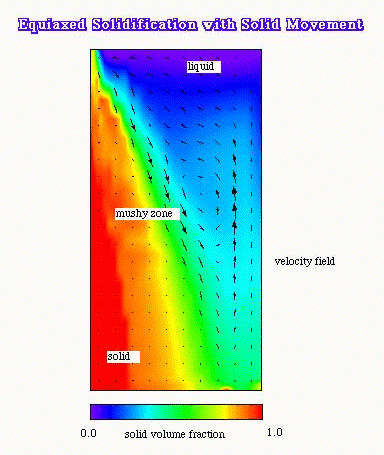M. Martorano, R. Rerko, K. Greven, J. Ni, C.Y. Wang (Penn State), A. Ramani, R. Anaparti, and C. Beckermann
This research is primarily concerned with the effects of convection on coupled columnar and equiaxed solidification of metal alloys. The goal of this study is to understand the basic physical phenomena (such as grain fragmentation, growth, and sedimentation) and to create a simulation model that can be used to predict the compositional and structural features in a solidified material. The emphasis is on the effects of melt convection and solid (grain) transport during solidification.
The figure below shows a simulation of solidification of an Al-4wt%Cu alloy using a two-phase model. The growing solid phase is assumed to have a globulitic (spheroidal) morphology (sometimes also referred to as 'equiaxed'). The cavity is cooled from the left sidewall. The nucleation, growth, and movement of the globulitic crystals is calculated together with the thermosolutal convection in the melt. Final results include the macrosegregation pattern and the grain size distribution, both being caused by the solid and liquid motion during solidification (from J. Materials Processing and Manufacturing Science, Vol. 2, pp. 217-231, 1993).
